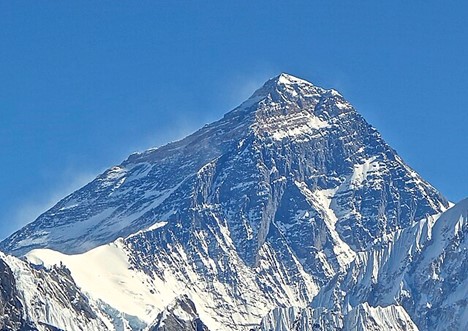HIST 5706F: Digital History
Fall 2024
Instructor: Professor Shawn Graham

Why? Because it’s there!
Also: because it’s a great visual metaphor for learning digital history. I’m nothing if not subtle.
Introduction
most recent update: May 23 2024
Magdalen College Cambridge holds the archive of the explorer George Mallory. We are going to work with this body of materials to learn various tools and techniques of digital history.
I am starting a project on the archaeology of Mount Everest, and so I am using this course to not only give you an opportunity to work with a bounded, interesting, corpus of historical documents but also to kick start my application process to SSHRC. I will be workshopping some of my application materials with you.
There are a variety of flavours of digital history; I tend to categorize them by the eventual aims of the investigator.
- There is a digital history meant as preservation and access: aspects of digitization, data management, metadata.
- There is a digital history meant as public storytelling
- There is a digital history as history influenced by quantification and analytics.
These are just a few lenses through which we may view digital history. My goals are several:
- for you to identify which lens interests you most
- for you to develop foundational abilities for pursuing those interests
- for you to develop a professional online persona with on a space that you control
I expect you to fail gloriously, which is to say: digital work is frustrating and things often don’t work the way you want them to. To ‘fail gloriously’ is to be open about what has not worked so that your colleagues can learn from your experience.
Stuff isn’t going to work. It’s just the way it is. Digital approaches are replete with tacit assumptions and things-left-unsaid. There are generational aspects at play, too. Those of us who came of age in different eras of digital tech – the home computer boom of the ’80s, the early web of the ’90s, etc etc – were exposed to different ways of thinking about what computers/digital techs were for and how best to use them. This will mean that I will make assumptions about your starting proficiencies which may or may not be warranted.
I expect you to call me on this. After all, how else can we learn?
Therefore, we will begin with this corpus of material of this Edwardian man, this product of Empire, this veteran of WWI, this colonial explorer. We will develop our skills through digital manipulation of his papers and letters (some of which were found on his body in 1999 when it was discovered on Mt. Everest.)
How class meetings will work
In general, each week one of you will take us through your exploration of the materials. You will have chosen a particular Programming Historian tutorial from a curated list I will provide, and you will have completed it. Then, you will have tried to adapt it to the Mallory archive. Your goal will be to explain to us the information left tacit in the tutorial. Tells us where you got stuck. Tell us how you solved the problem. Tell us how what you learned sheds new light on Mallory and his world. Tell us how what you learned might be useful for your own research (whether for your eventual thesis/MRE or in other classes). You will reflect on how this tutorial intersects with your other courses, your own research, and indeed, the few readings that I will provide you (I expect you to follow through links to bibliography and so on in the Programming Historian tutorials and to bring those to bear in the conversation). If you are not leading the post-mortem, I still expect you to be familiar with the tutorial, the associated links and so on so that we can have a productive conversation.
You will produce by the end of the course a body of work that evaluates your own progression from your own particular starting point, and render it into an appropriate digital historical container. More details to come.